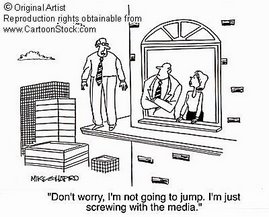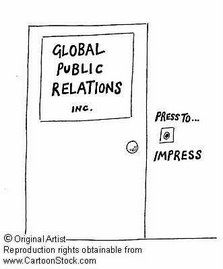 In my opinion, the use of communication technology is pervasive in contemporary public relations practice, and often there’s no choice but to adopt the newest communication technology.
In my opinion, the use of communication technology is pervasive in contemporary public relations practice, and often there’s no choice but to adopt the newest communication technology.
For example, even the smallest and most traditional businesses require the Web sites that their customers expect, and the submission of a simple news release to a mass medium’s electronic newsroom must satisfy the technological requirements of that medium. Organisations recognise that harmful rumors can spread worldwide in minutes, while blogs can help monitor that problem (Alterman, 2003). The contemporary practice of public relations requires practitioners to immediately respond to emerging issues and crisis situations via Web sites, blogs and other new media. Today, the choice of communication channels is dictated by technology: a practitioner must seriously consider which message forms and channels would be best for specific publics. Often, new technological forms and channels, such as electronic pitching, podcasting and blogging, prevail over traditional news releases and media kits.
Thus, I believe that all students must know how to use today’s communication technology and must monitor and most likely adopt rapidly and unpredictably to changing technology. Equally important, public relations students must be taught to appreciate and to continually explore the societal ramifications of continually emerging communication technology. As technology remains simply a tool that PR practitioners must manage and adopt to its changes.
Public relations practitioners are among the heaviest users of today’s communication technology. However, technology remains simply a tool–albeit an important tool–those practitioners must manage. This means public relations professionals must not be unduly constrained by technology in developing their communication strategies, nor must practitioners’ strategies and tactics be restricted by the technicians who develop and maintain organisations’ communication technology infrastructures (Straubhaar and LaRose, 2005). Rather, public relations practitioners must be the managers of how their organisations strategically use communication technology to affect public relationships. Within their organisations, public relations practitioners best understand that communication technology that conquers time and space by permitting instantaneous communication worldwide not only can create understanding and cultivate harmony and empathy between an organisation and its publics, but has great potential to generate misunderstanding and to exacerbate disharmony and conflict (Straubhaar and LaRose, 2005).










